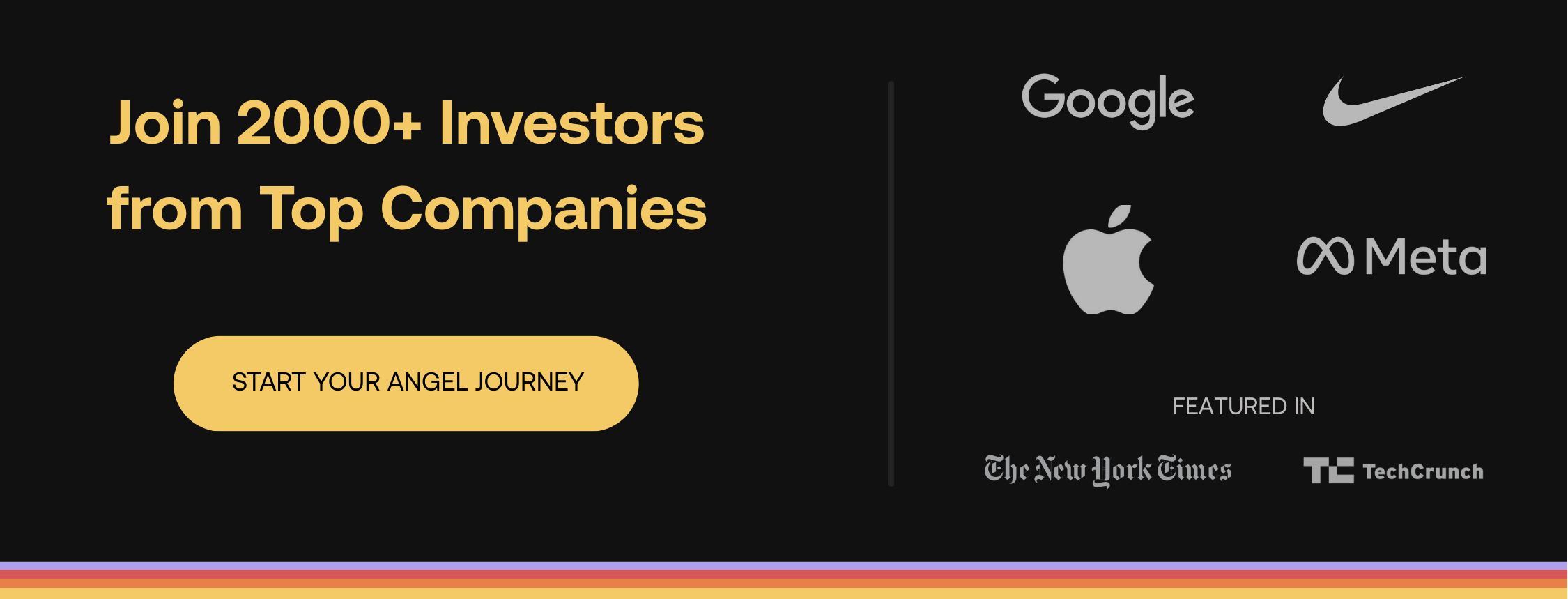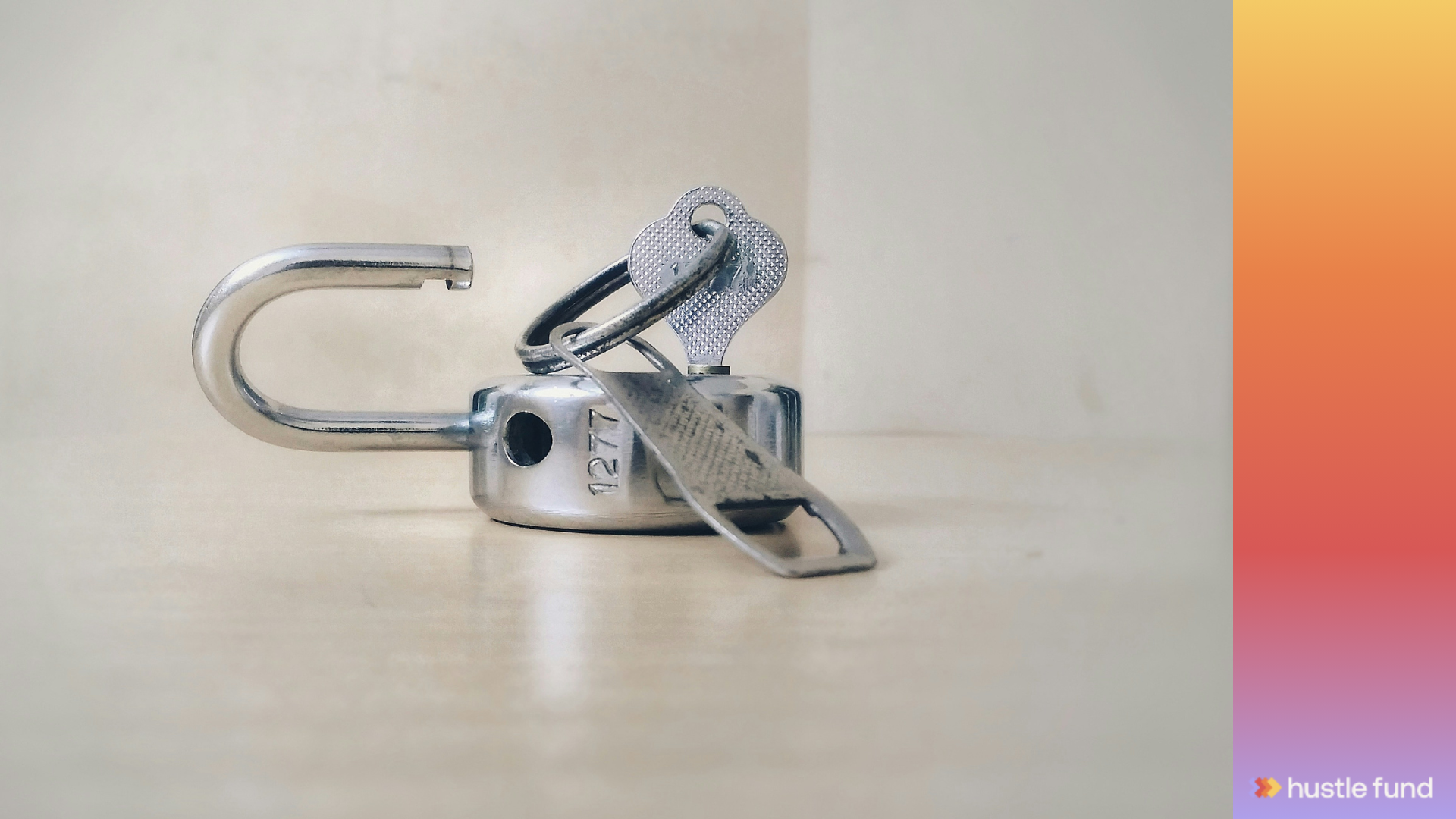How to Build Deal Flow: The Thing Every Investor Needs But Nobody Teaches
.png)
Brian Nichols is the co-founder of Angel Squad, a community where you’ll learn how to angel invest and get a chance to invest as little as $1k into Hustle Fund's top performing early-stage startups.
Want to know the dirty secret about venture capital? The best deals don't get shopped around.
By the time a hot company is sending cold emails to investors, the smart money has already moved. They heard about it six months ago from a founder they backed. They've been building a relationship. They're not competing in a crowded process. They're getting terms offered to them.
That's what great deal flow looks like. And it's not luck. It's a system.
What Deal Flow Actually Means
Let's start with definitions because investors use this term loosely. Deal flow is not just "companies that email me their pitch deck."
Real deal flow is a consistent stream of high-quality investment opportunities that you see before most other investors. The key words: consistent, high-quality, and early.
You can see 1,000 companies a year and have terrible deal flow if they're all cold outbound from companies that have already been rejected by 50 other investors. Quality matters way more than quantity.
Why Most Investors Have Bad Deal Flow
Here's why most investors struggle: they're purely reactive.
They wait for companies to come to them. They review pitch decks as they arrive. They take meetings with whoever gets a warm intro. They're not actively building relationships with founders before those founders are raising.
This is a losing strategy. By the time a founder is pitching you, they're probably pitching 30 other investors. You're in a competitive process. You're going to have to move fast, pay up, and hope you win.
Compare that to the investor who's been building relationships with great founders for years. When those founders start companies, the investor gets a call before the deck goes out. There's trust. There's history. There's no competition.
That's the difference between reactive and proactive deal flow.
The Three Channels of Great Deal Flow
In my experience, deal flow comes from three main channels: founder referrals, network effects, and content/brand. Let's break down each one.
Founder referrals are the gold standard. When a founder you've backed refers you to another founder, that referral is pre-qualified. The founder you backed knows what you're good at, knows what you're looking for, and thinks there's a fit. These referrals convert at a much higher rate than anything else.
Network effects are what happens when you've been doing this long enough that your portfolio compounds. You back 50 companies. Some fail, but 10 of them do really well. Suddenly you're associated with winners. Great founders want to work with investors who've backed great founders. It's a virtuous cycle.
Content and brand is the wild card. This is where platforms like Twitter, LinkedIn, blog posts, and podcasts come in. If you're consistently sharing useful insights, founders start to know who you are before they meet you. They seek you out.

How to Get Founder Referrals (The Right Way)
Founder referrals don't just happen. You have to earn them. Here's how.
First, be genuinely helpful to the founders you've already backed. Not just when they need something. All the time. Make intros. Share insights. Show up. Founders remember investors who are actually useful.
Second, make it easy. Explicitly tell your founders that you love founder referrals and you're always looking to meet great people. Give them language they can use. "If you know anyone building something interesting, I'd love an intro." Simple as that.
Third, close the loop. When a founder refers you to someone, update them on what happens. Even if you pass, let them know why. This trains them to make better referrals and shows you take their intros seriously.
Fourth, expand your definition of "founders you've backed." This includes founders you've spent time with, given advice to, made intros for, even if you haven't invested. These relationships compound over time.

Building Relationships Before the Raise
Here's the move that separates great investors from mediocre ones: building relationships with founders before they're raising.
This is hard because it doesn't have immediate ROI. You're investing time in someone who might not start a company for two years. Or might start a company that's not interesting to you. Or might raise from someone else.
But if you build enough of these relationships, some percentage will turn into great investments where you have an edge.
How do you find these founders? They're everywhere. They're Xing about problems in their industry. They're speaking at conferences. They're working at great companies and will eventually leave to start something. They're in your extended network.
The key is being genuinely curious and helpful without expecting anything in return. That authenticity matters. Founders can smell transactional relationships a mile away.
The Power of Consistency
Here's something most investors don't realize: consistency beats intensity when it comes to deal flow.
You don't need to go to 10 conferences in one month. You need to go to one conference per quarter, every quarter, for three years. You don't need to send 100 cold emails today. You need to send five thoughtful emails per week, every week, for a year.
Consistency signals that you're serious, that you're in this for the long term, and that you're reliable. That matters to founders.
Using Content to Generate Inbound
Let's talk about content because this is massively underutilized by investors.
The key is providing genuine value. Not "here's why you should pitch us" but "here's how to think about valuation" or "here's what we learned from our portfolio." Make it useful for founders whether they pitch you or not.
This takes time to build. You're not going to tweet once and have great companies flooding your inbox. But if you share useful insights consistently for a year, you'll start to see results.
And here's the sneaky benefit: when founders apply to you after following you for six months, they're pre-qualified. They know what you invest in, how you think, what you value. The conversation starts from a much better place.
Quality vs. Quantity
Let me be really clear about something: more deal flow is not always better.
If you go from seeing 50 companies a year to 500, but the quality stays the same (or gets worse), you haven't actually improved your deal flow. You've just created more work for yourself.
The goal is to increase the density of great opportunities, not just the raw number.
How do you increase quality? By being more selective about what makes it to your pipeline. Have a clear thesis (see: my article on that). Have clear criteria. Politely pass on things that don't fit. Don't waste time on zombie deal flow just because it's there.
The Role of Events and Community
Events and community are criminally underrated for deal flow.
When you host an event or are part of a community, you're creating repeated touchpoints with founders. You're not just getting one meeting. You're getting multiple interactions over time. That builds relationships that lead to deal flow.
At Hustle Fund, we run Angel Squad specifically for this reason. It's a community of early-stage investors and founders. By bringing these people together regularly, we create an environment where relationships form naturally, which leads to deal flow for everyone involved.
You don't need to run your own event to benefit from this. Just show up. Go to the same conference every year. Attend the same meetup every month. Be the investor who's always there. That consistency builds recognition and trust.
Leveraging Your Existing Portfolio
Your existing portfolio is your best deal flow engine. Here's how to activate it.
Stay in close touch with your portfolio. Send them updates about other portfolio companies (with permission). Make intros between portfolio founders. Host founder dinners. Create reasons for your portfolio to interact with each other.
When your portfolio founders are talking to each other, they're also talking about other founders they know. That's where referrals come from.
Also, explicitly ask your portfolio for referrals. Not in a weird, transactional way. Just "Hey, we're actively looking to make new investments. If you know great founders, I'd love an intro."
And when a portfolio company is hiring, help them source candidates. Some percentage of those candidates will eventually start companies. Guess who they'll remember?
What Bad Deal Flow Looks Like
Let's talk about what to avoid. Bad deal flow is companies that have been rejected by everyone else finding their way to you. It's cold emails from founders you've never heard of with no warm intro. It's pitch decks that arrive via random LinkedIn messages.
This doesn't mean every cold email is bad. Some great companies do cold outreach. But if your entire deal flow is cold inbound, you're going to see mostly mediocre opportunities.
Bad deal flow also looks like only seeing companies through paid platforms or demo days. Those can be fine for supplemental deal flow, but if that's your primary source, you're seeing the same deals as thousands of other investors.
The Long Game
Building great deal flow is a long game. You won't see results next week or next month. But if you're consistent, if you're helpful, if you build genuine relationships, you'll start to see better opportunities, earlier, from better founders.
If you're just starting out as an investor and you want to tap into existing deal flow while building your own, check out Angel Squad. It's designed specifically to help early-stage investors see better opportunities and build the relationships that lead to proprietary deal flow.
The best time to start building your deal flow engine was five years ago. The second best time is today.













